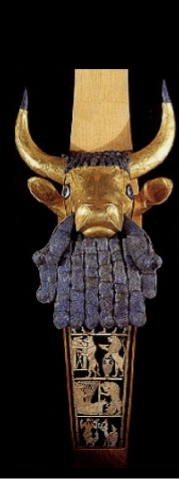Art history (1) prehistoric
1/98
There's no tags or description
Looks like no tags are added yet.
Name | Mastery | Learn | Test | Matching | Spaced |
|---|
No study sessions yet.
99 Terms
prehistoric
the period ranging from 20,000 to 6,000 BC before written record
paleolithic, mesolithic, neolithic
what three periods is the prehistoric era divided into
nomadic hunter/gatherers who followed food supplies and hunt in large groups
paleo (old) lithic (stone)
paleolithic
extermination of large animals such as mammoths, small group/individual hunts
mesos (middle) lithos (stone)
mesolithic
first permanent settlements, development of agriculture and animal husbandry
first evidence of religious beliefs
neo (new) lithos (stone)
neolithic
small portable sculptures featuring animals and hybrid creatures, and venus figures
cave paintings
two predominant artifact types found during the paleolithic period
primitive reliefs
the ability to work safely and undisturbed in a secure cave, may account for the early appearance of prehistoric relief sculpture
venus figures
considered to have totemic or fertility significance
de-emphasized elements like the face, arms, hands, legs, and feat
what makes us sure the venus figures were not portraits?
emphasized elements are reproductive features - breasts, genitalia, hips
what makes us think venus figures were used in relation to fertility?
religious practices in animistic societies ie societies that believed that objects, ancestors, plants, and animals have a distinct spiritual presence
shamans/spirit doctors channel the unseen forces into this world, often through trances
shamanism
artifacts for permanent location settling would be larger and not portable whereas artifacts in nomadic cultures would be small figures and easily portable. these woild be things like venus figures
How would nomadic culture or a culture settled in a permanent location affect the size of Paleolithic and Neolithic Artifacts?
venus of berekhat ram - north israel
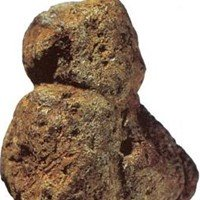
venus of tan-tan - morocco

venus of willendorf - austria
de-emphasized face, hands, arms, legs, feet
emphasized reproductive features - fertility
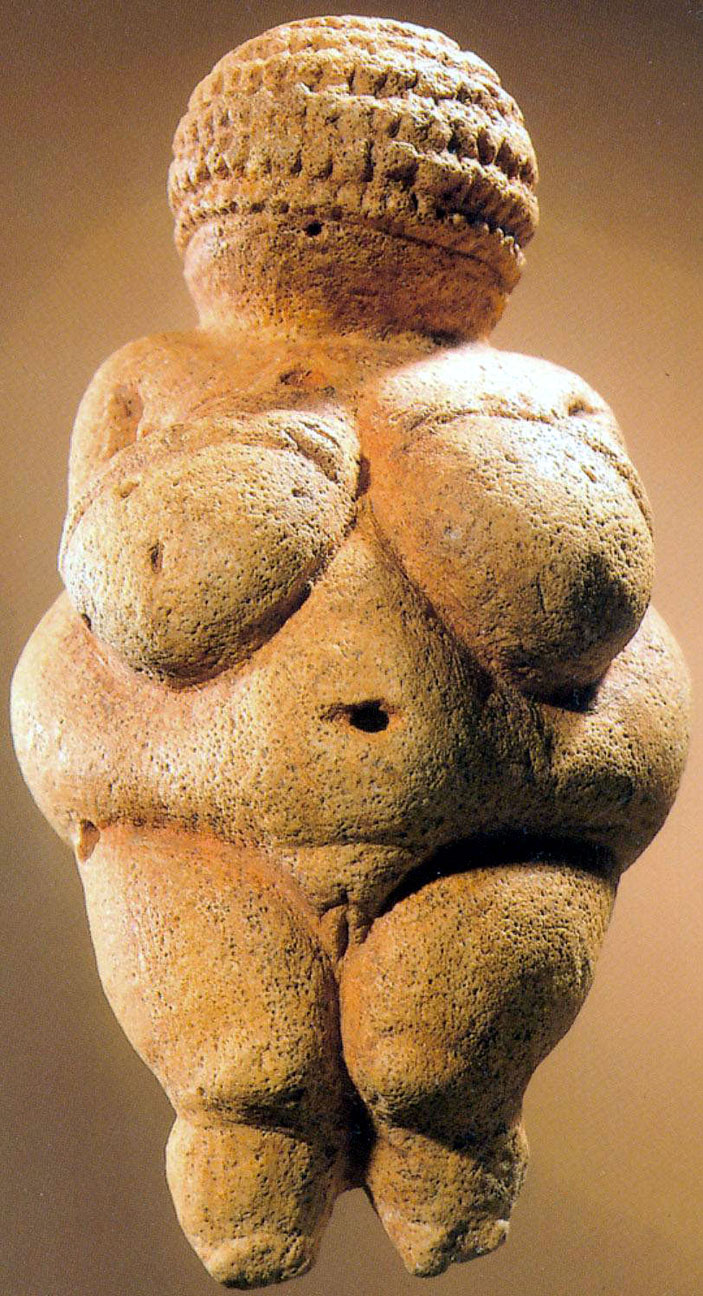
ivory figure - lion man
lion head partly human body - germany, 40,000 years old
made of mammoth tusk
composite creature, perhaps a spirit doctor
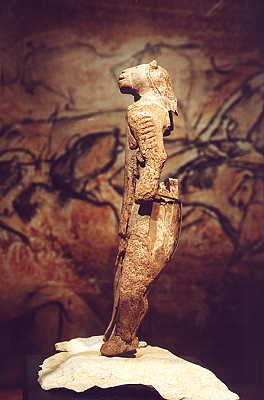
warty pig
could be the earliest known representational work of art in the world
uncovered in maros-parngkep caves
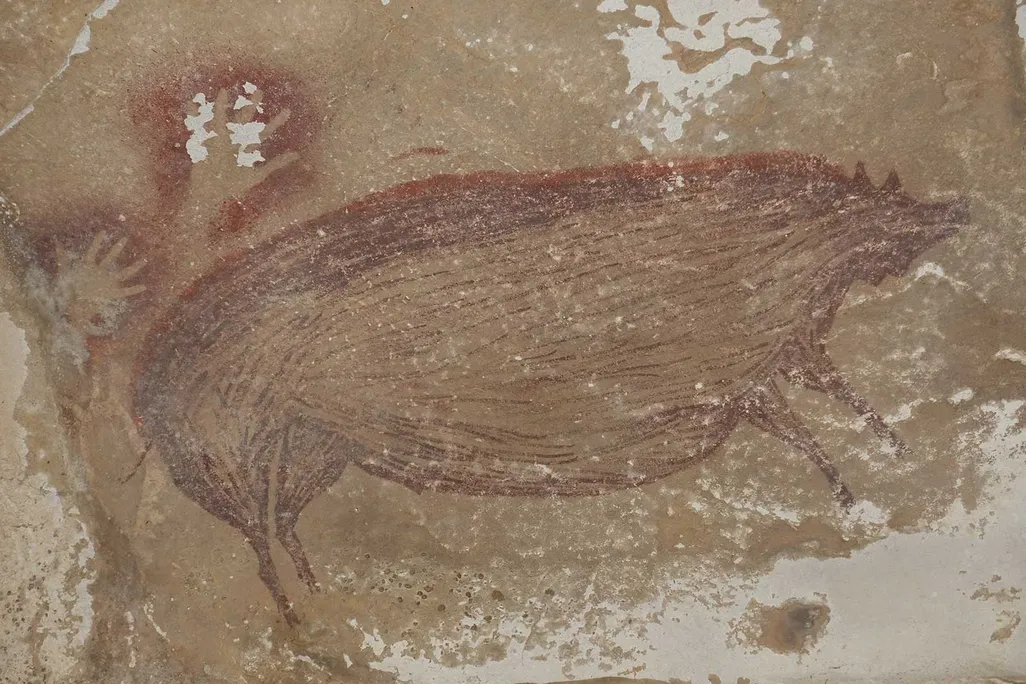
oldest in indonesia and western europe
found in difficult to reach areas
caves revisited for many centuries
not settlements
about paleolithic cave paintings
hand stencil in the chauvet caves
discovered in 1994
63% of the animals represented in the cave are bears, lions, mammoths, and rhinos - they did not hunt these
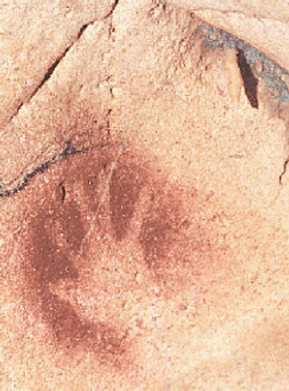
horse heads in chauvet cave
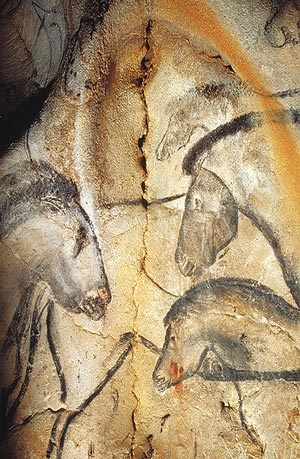
chauvet cave animals (bulls?)
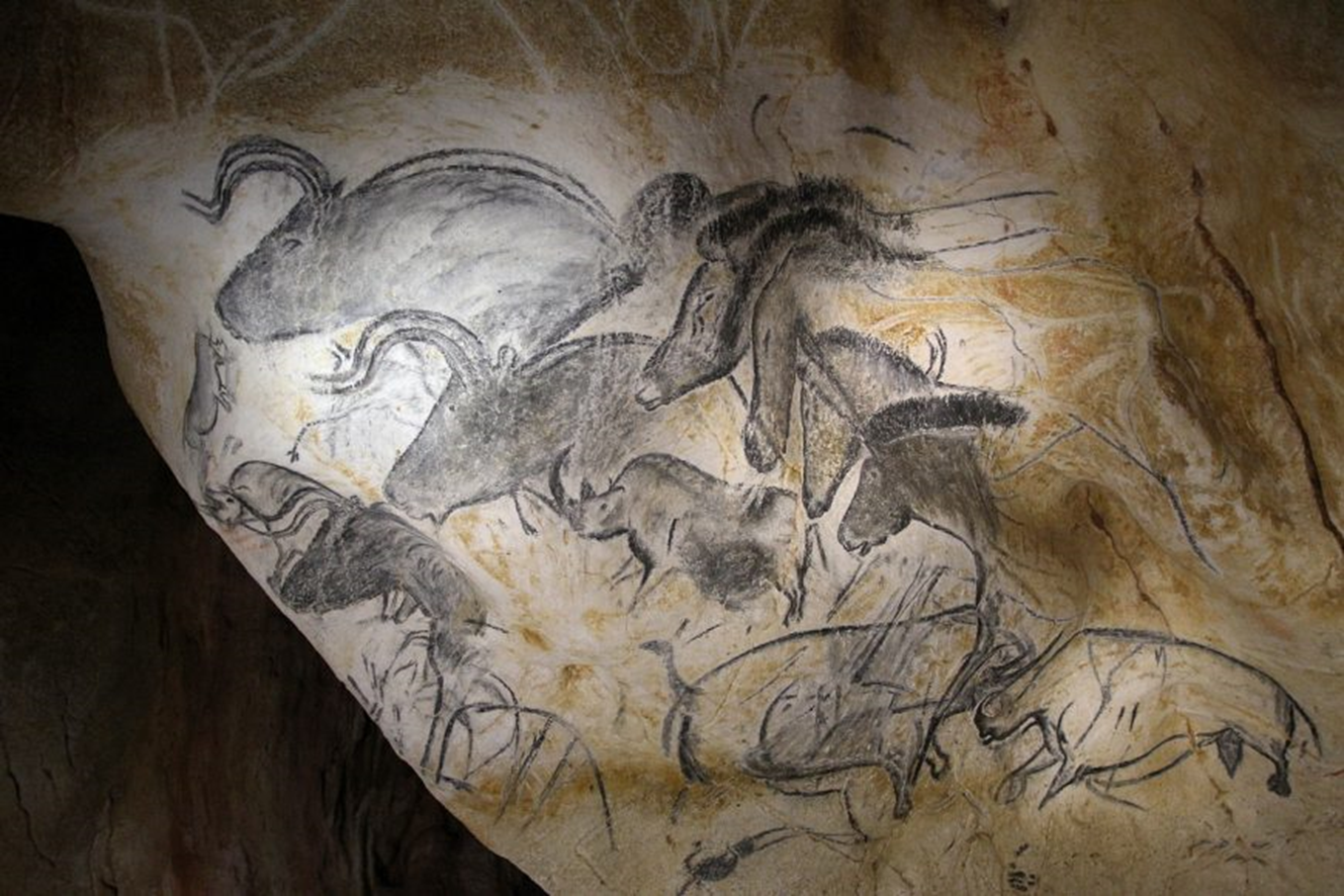
lionesses and rhinoceri in chauvet cave
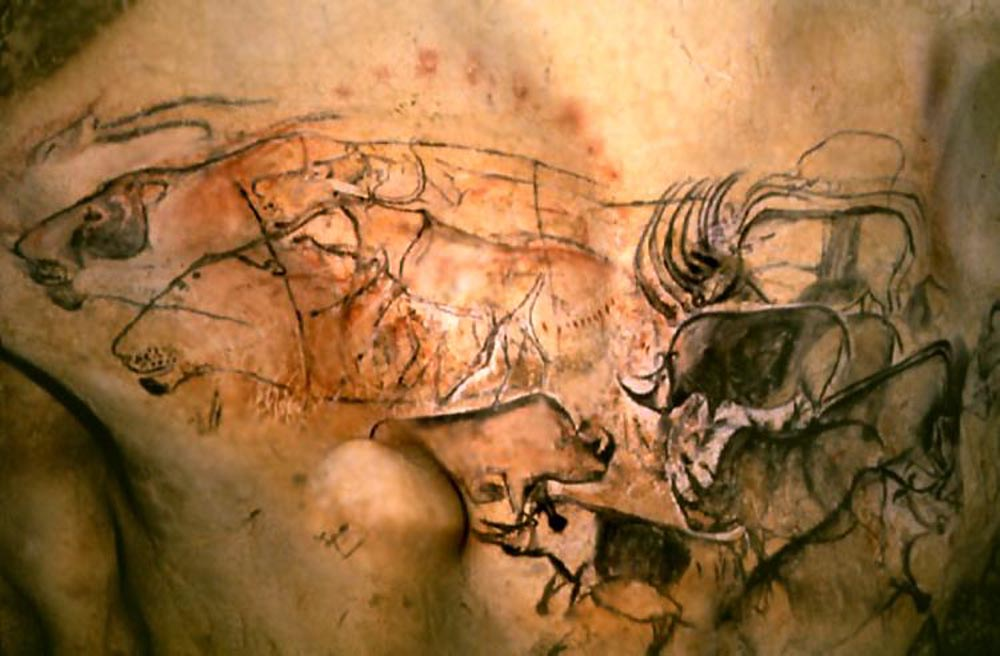
605 out of 900
most characteristic parts of the animals are depicted
how many animals have been identified in lascaux?
one of the earliest caves found
discovered in 1940 by boys who lost their dog
calcite roofed nu nonporous rock provides a dry place to feature art. used charcoal and ocher to paint
lascaux
bull is lascaux
example of twisted perspective
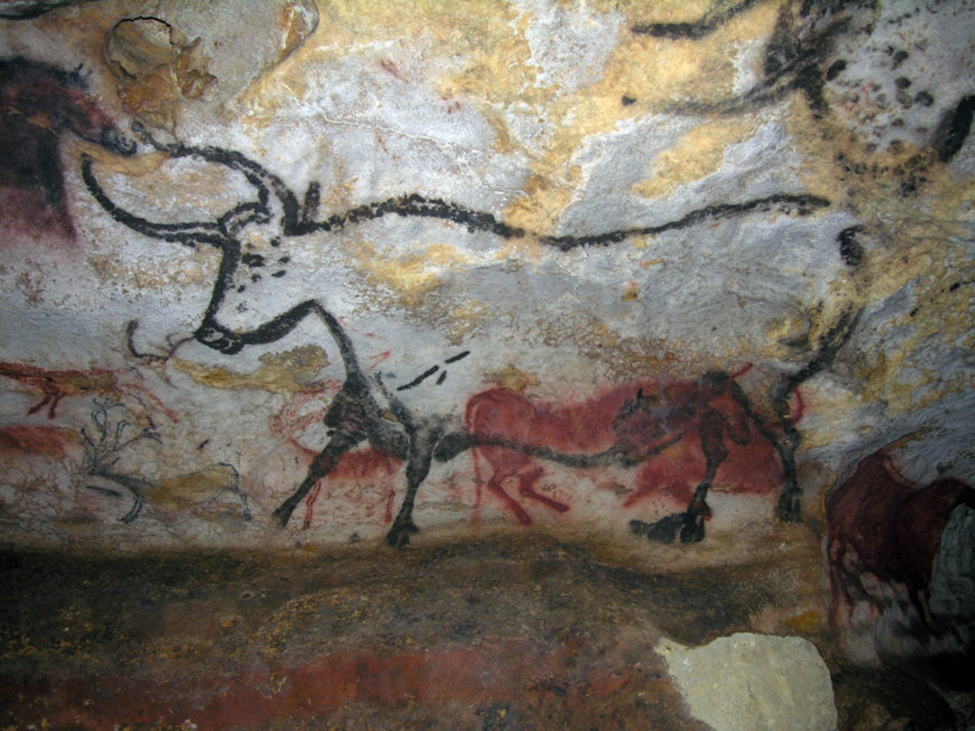
where the bodies of an animal are depicted in profile while we see the horns from a frontal view
twisted perspective
lascaux, hall of bulls
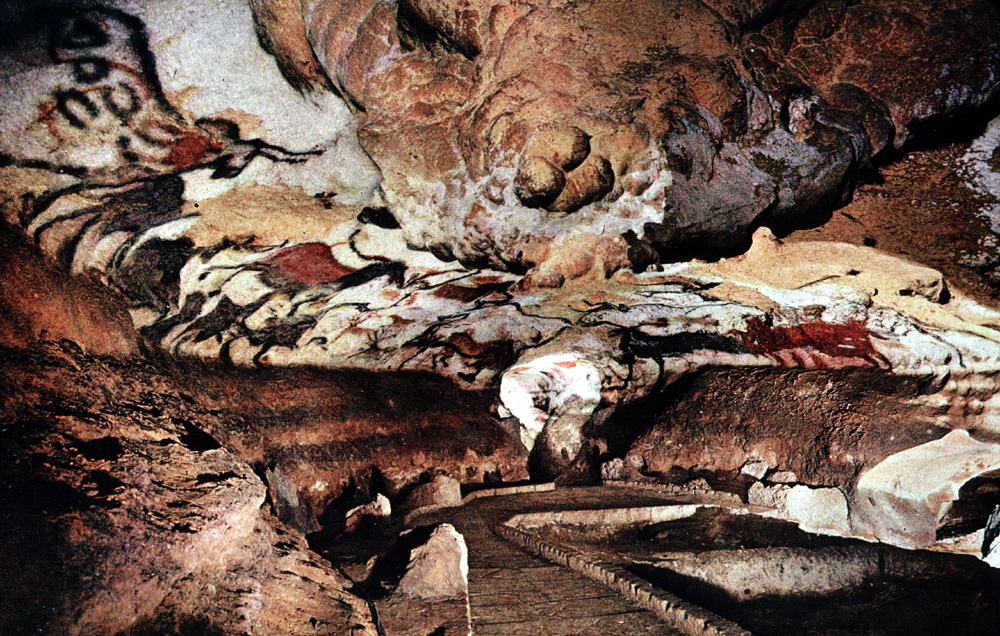
lascaux, hall of bulls
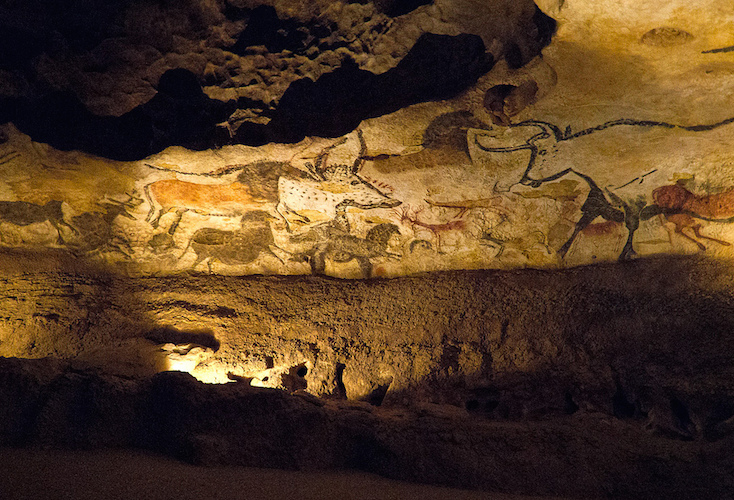
lascaux, hall of bulls
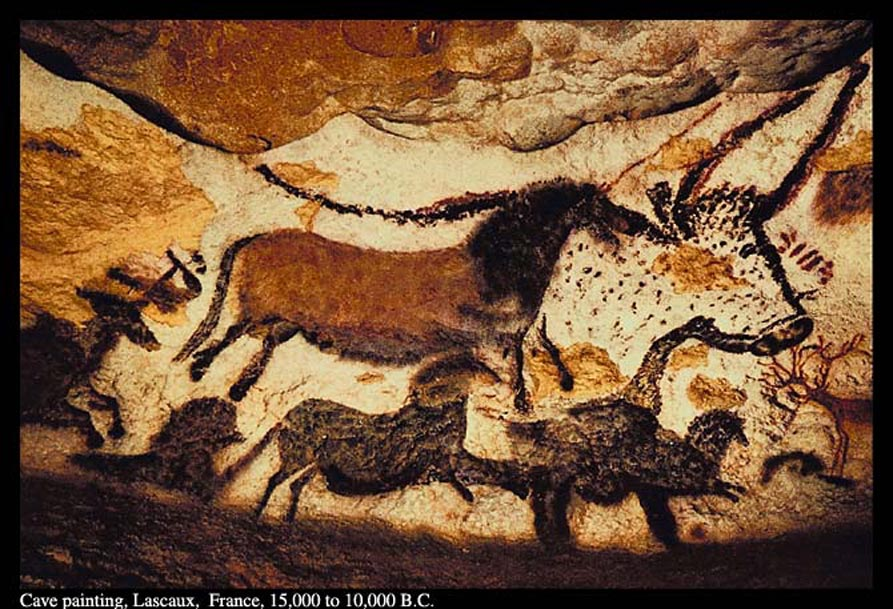
lascaux, great black bull
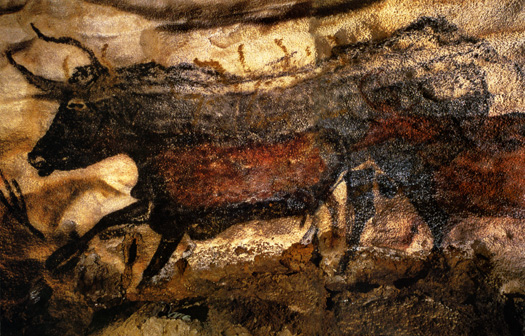
paintings and engravings found on cave walls and ceilings
parietal art
lascaux, horses
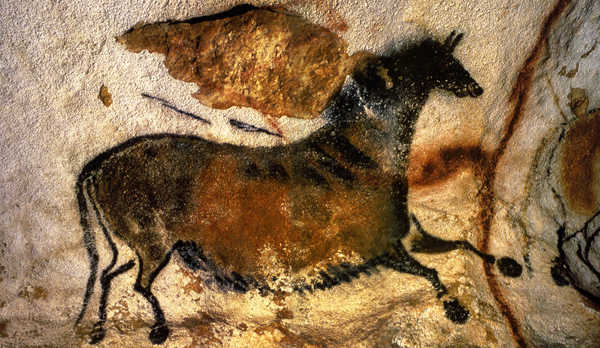
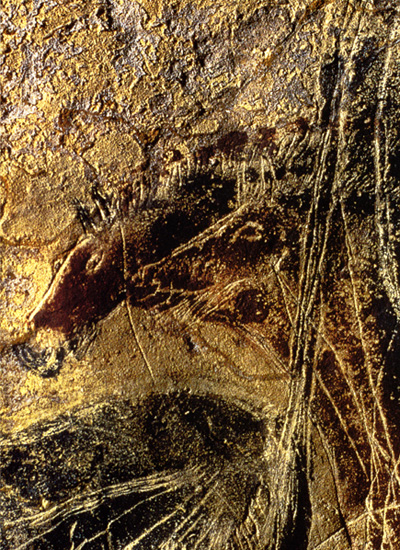
lascaux, red cow and first chinese horse
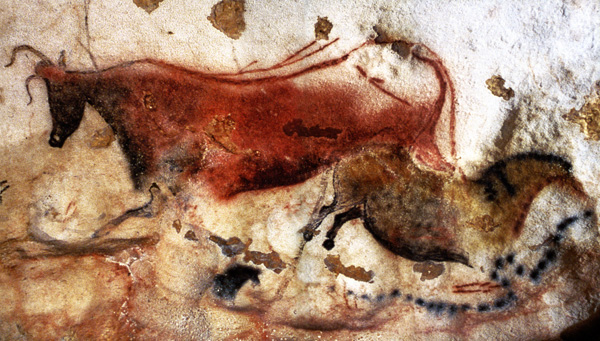
lascaux, shaft of the dead man
human figure with bird head - could be a shaman
bird on stick = spear thrower
bull wounded by spear
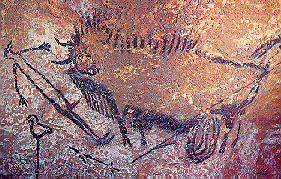
concept that presupposed that an image and what the image represents are linked
if one manipulates an image, one manipulates reality
explains the number of pregnant animals in paleolithic caves - continuous supply of food
successful hunting scenes assure a good hunt
sympathetic magic
the breath from people caused fungi to infest the walls and damage the art. a replica was created about 200 yards away from the original. it was open in 1948 and closed in 1963
why was lascaux closed to the public
historical geographic area encompassing the eastern Mediterranean including the islands. many neolithic artifacts were uncovered here
levant
potbelly hill, turkey
believed to be the oldest ceremonial site
three phases of construction, layers three two and one
round buildings with t shaped pillars set into thick interior walls. each building contains two larger pillars facing each other in the center. they were carved with reliefs of mammals. benches for sitting
no evidence of habitation
large scale objects and carvinfs imply religious function
transitional site marking shift from nomadic paleolithic and the development of permanent habitations
gobekli tepe
gobekli tepe
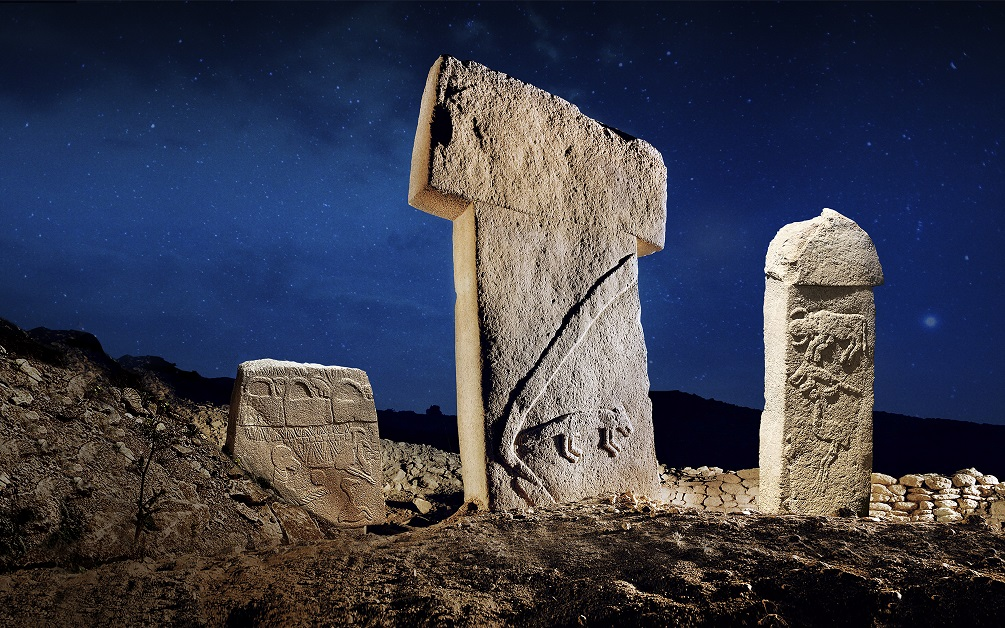
layer three gobekli tepe
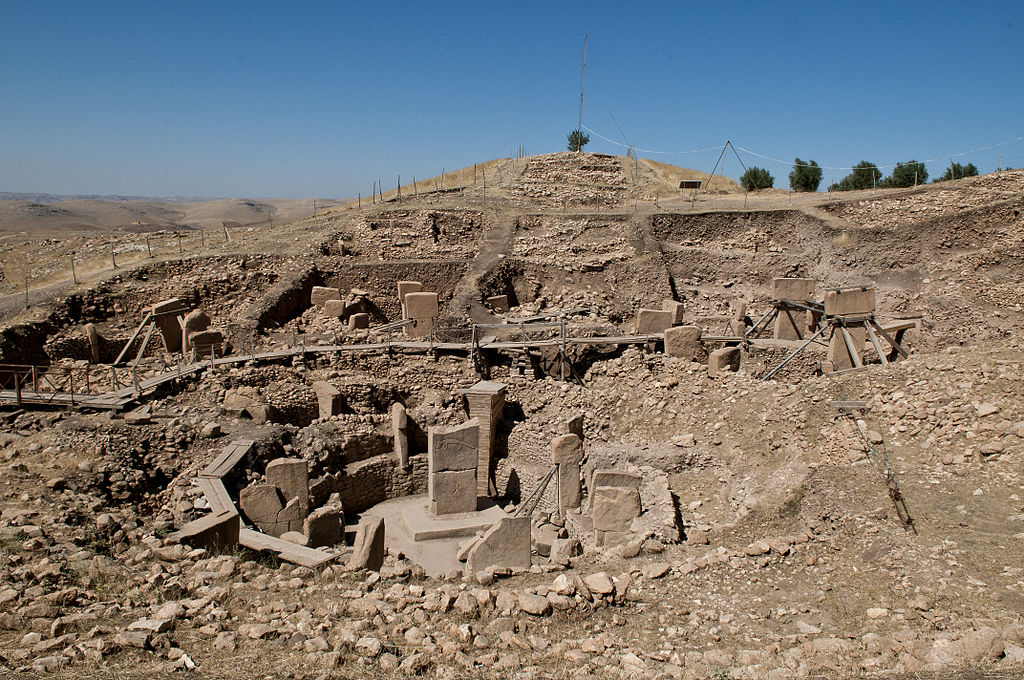
pillar from gobelki tepe layer three with relief carvings of a bull, fox, and crane
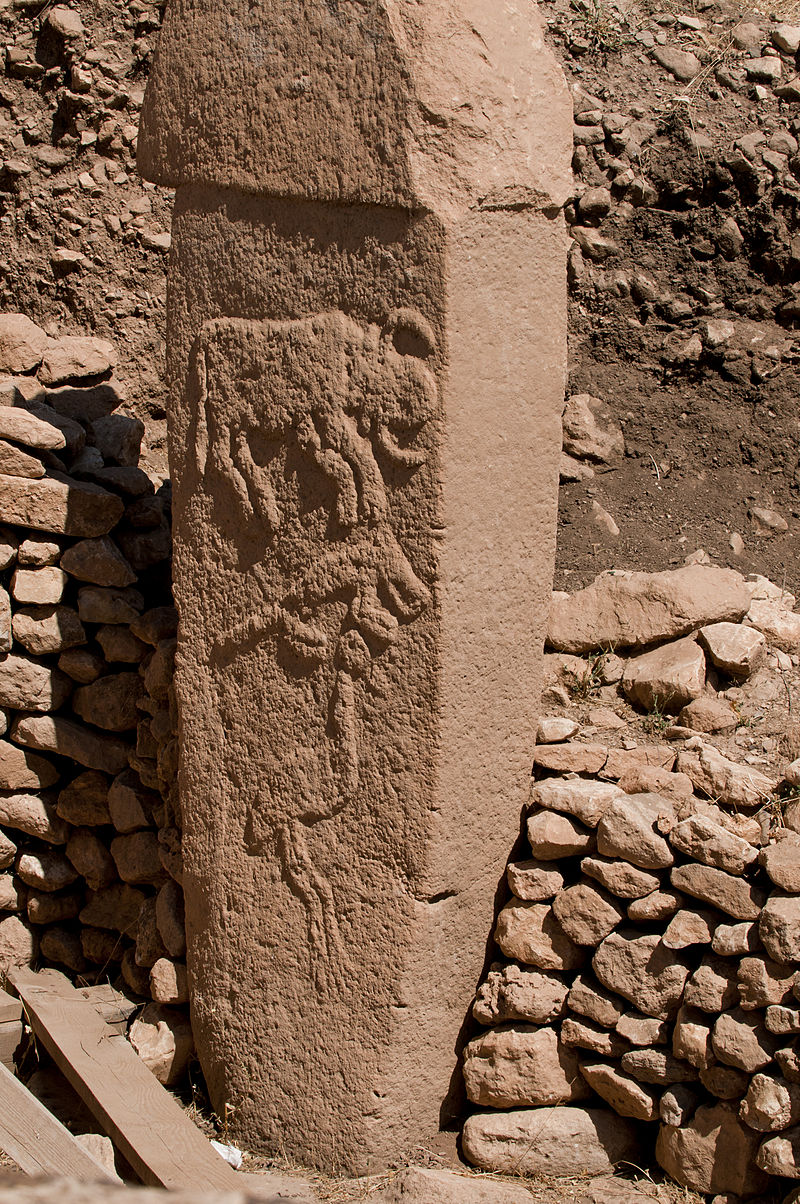
a sculpture that is attached to a bg. not fully 3d
relief
t-shaped pillars w/ jaguar
other with birds and insect
gobelki tepe
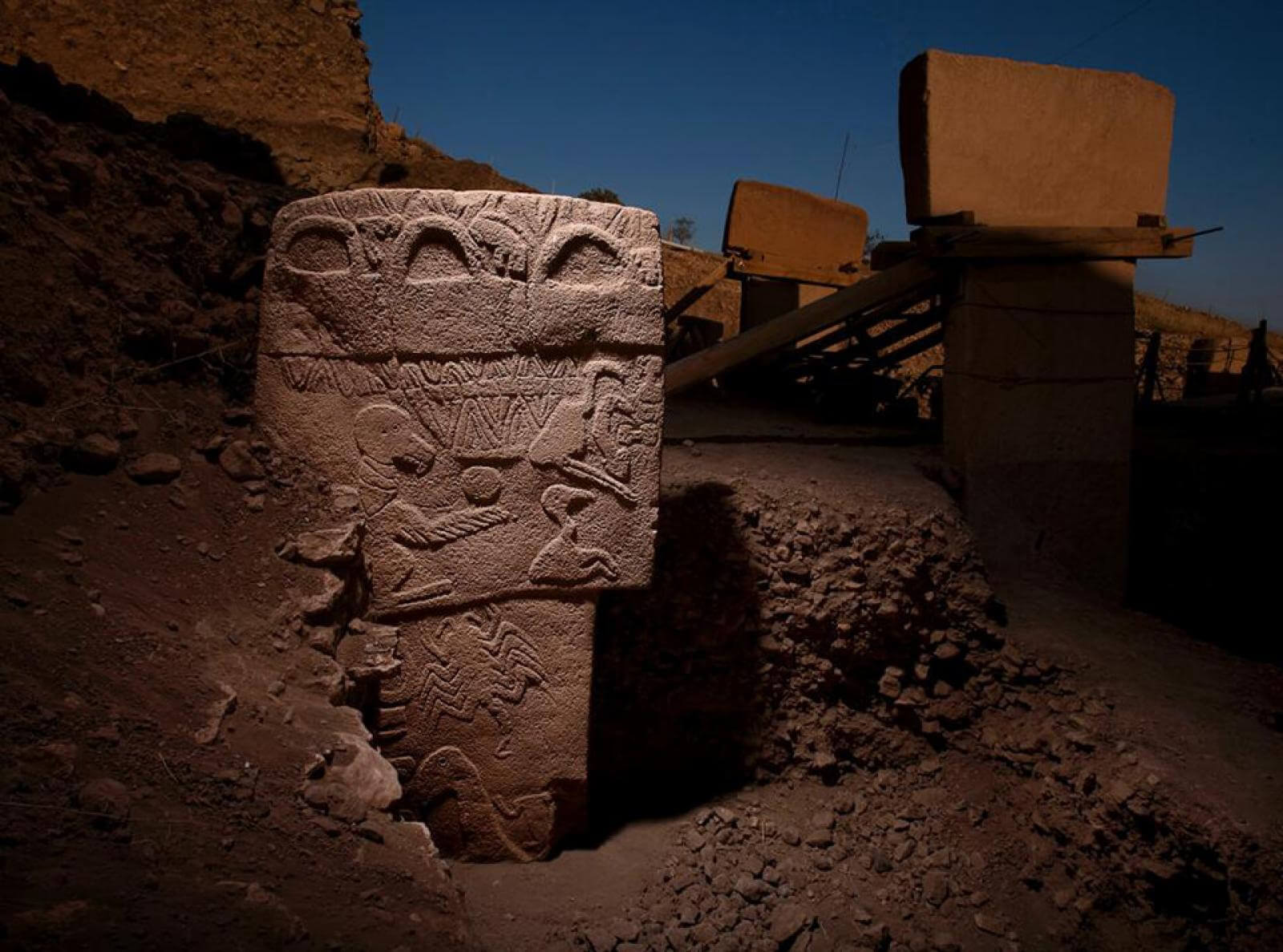
lion/tiger reliefs
gobelki tepe layer 3
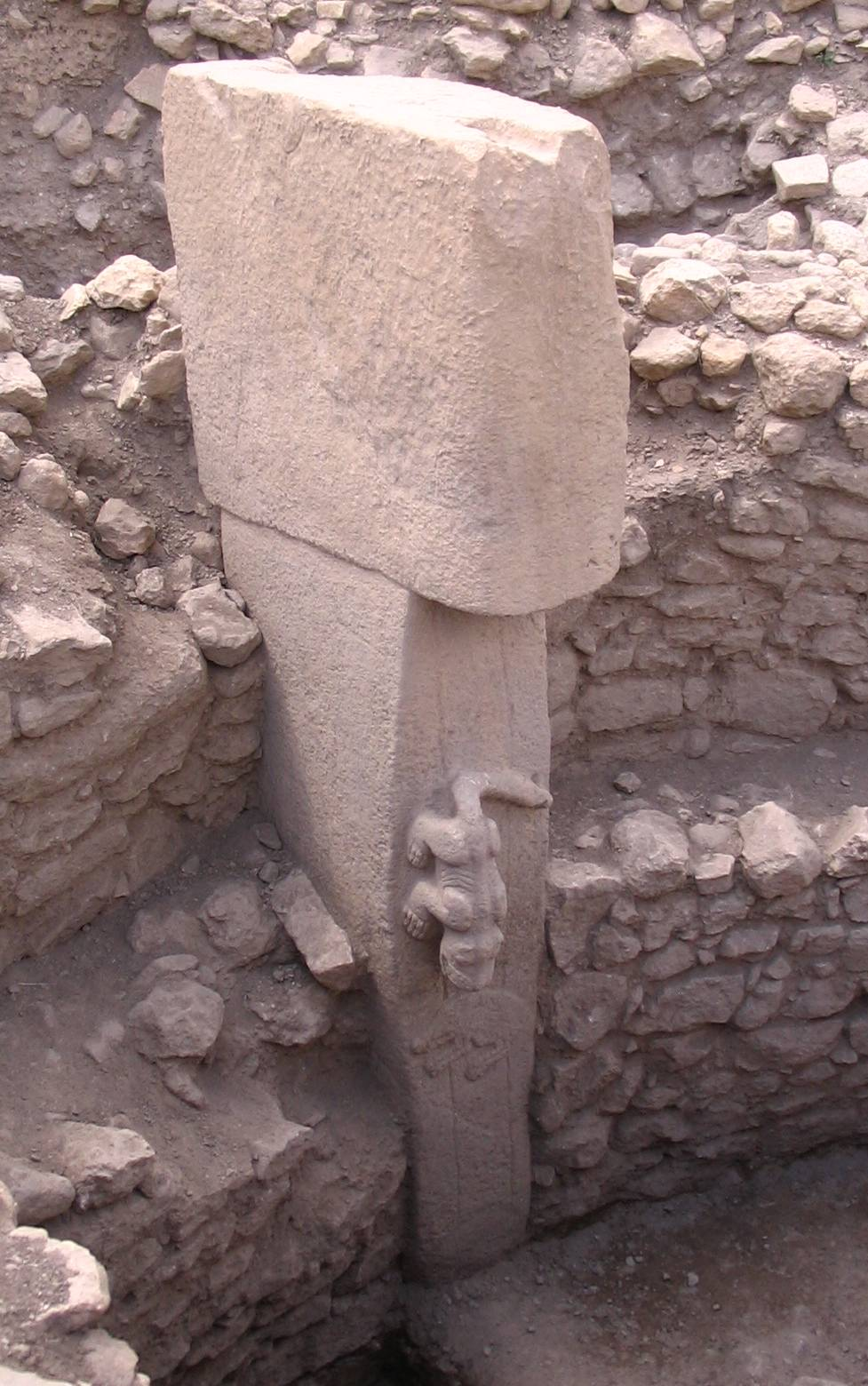
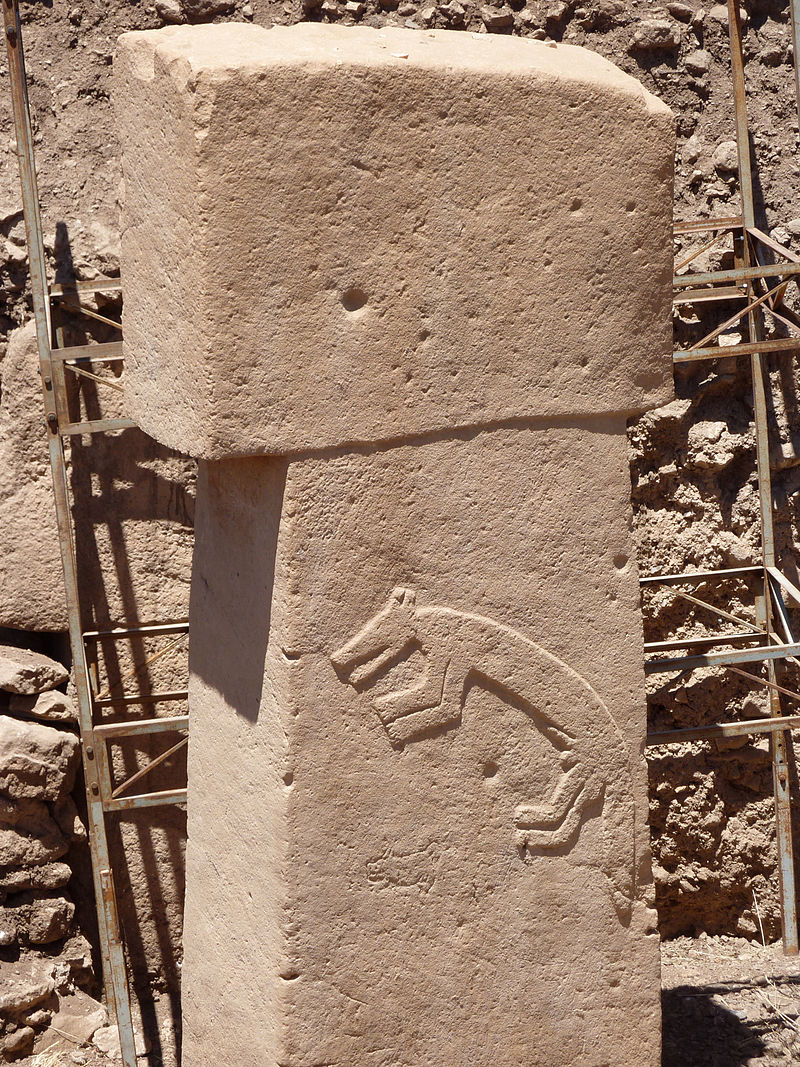
discovered in 1958 in turkey
one of the largest cities
gender equality
grain and legume production
sheep and cattle herding begin
houses decorated with murals
excavations have revealed bull heads and many mother goddess figures
catal huyuk
reconstructed house in catal huyuk
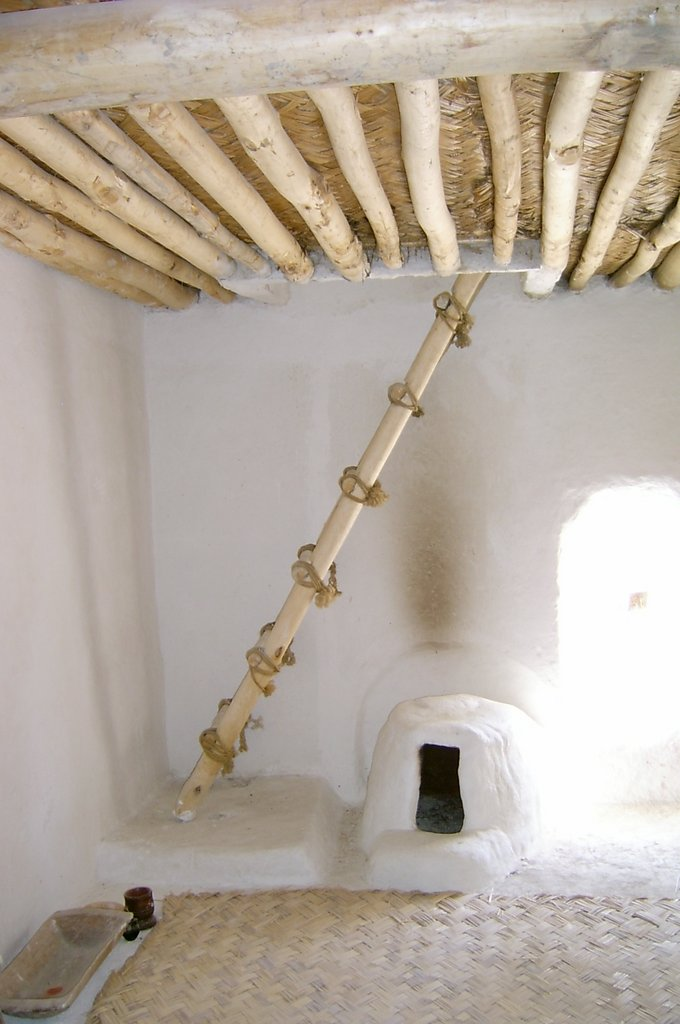
reconstructed shrine room at catal huyuk
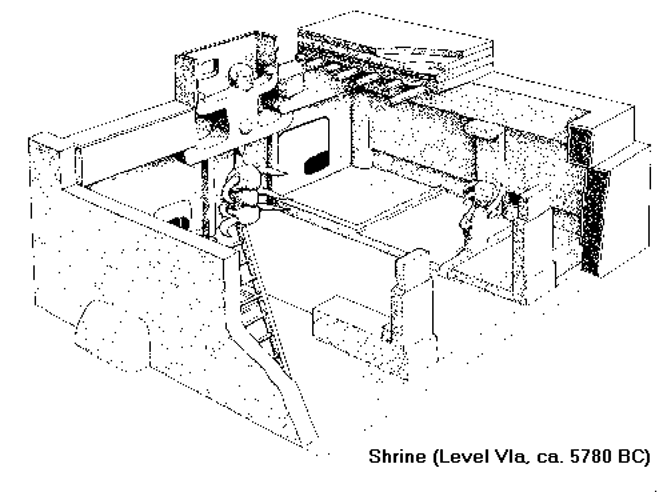
bull heads from catal huyuk - suggest connection between religion and bulls
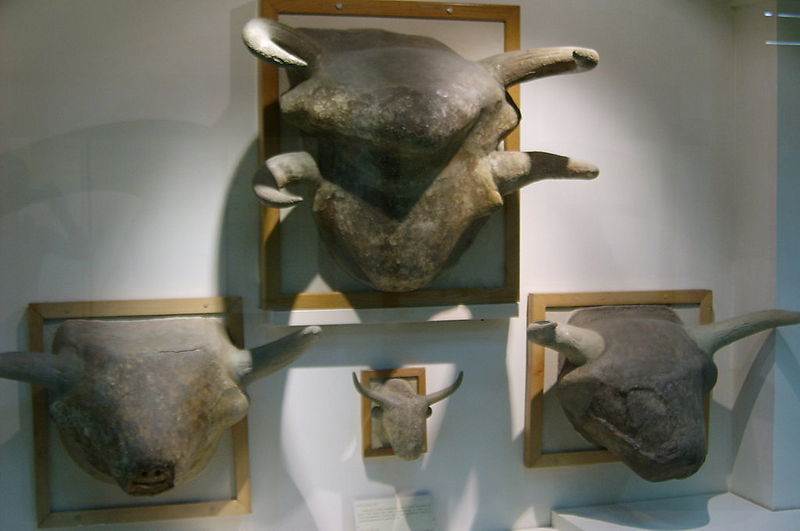
murals of animals in houses at catal huyuk
hunting scene
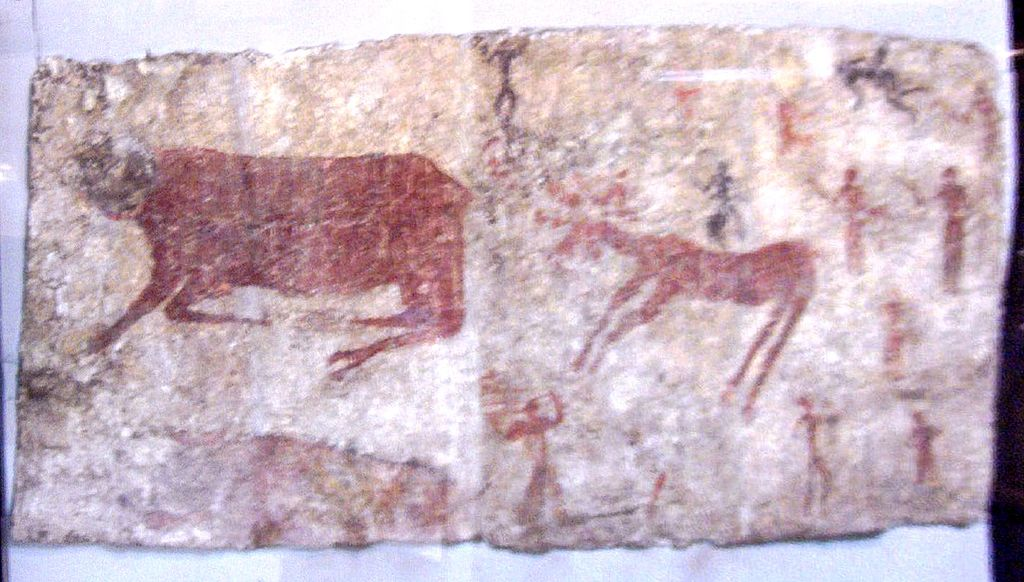
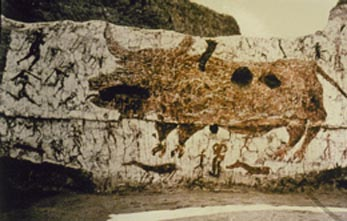
mother goddess from catal huyuk
found in grain bin, head restored. 16.5cm without head - protect or multiply the grain
seated on a throne with armrests made of lionesses
throne could be a sign of a deity or someone on a different plane of existence
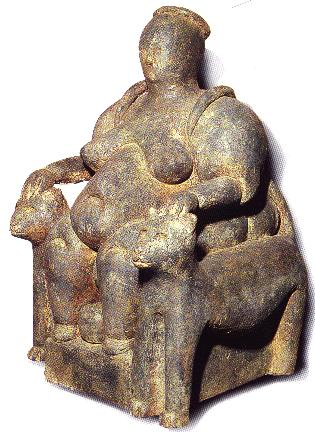
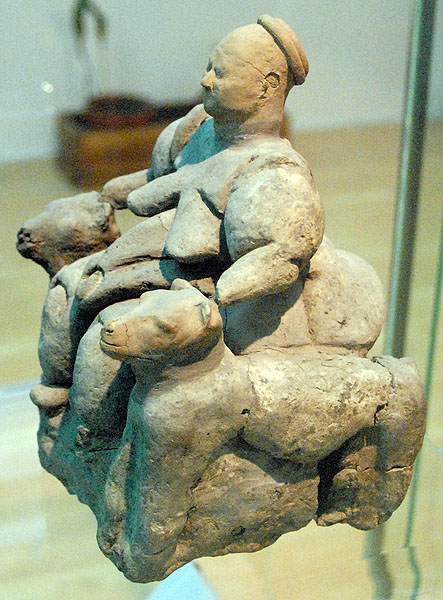
system of construction where 2 vertival elements (posts) are capped by a horizontal element (lintel)
post and lintel
held posts together
mortise and tenon
a pair of upright stones with a lintel stone spanning their tops
trilithon
large stone structure
megalithic
stonehenge
henge - circle
england, salisbury plane
consisted of 4 rings, 2 circular and 2 horseshoe shaped, and ave marked by the heel stone and its companion, two station stones, 2 barrows (burials) and an altar stone
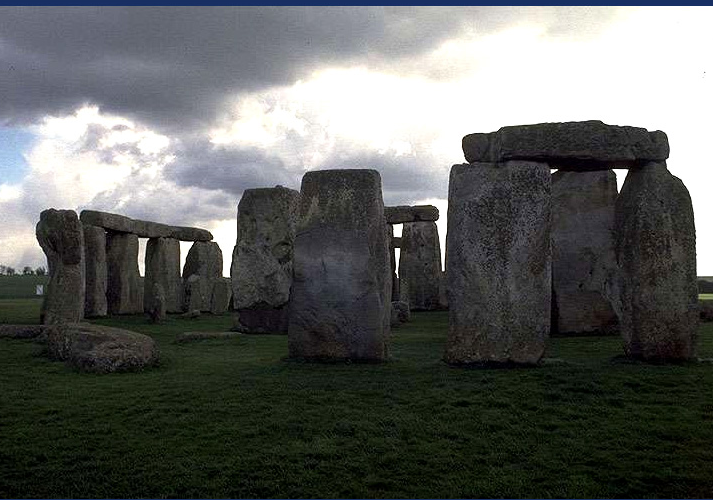
stonehenge
mortis
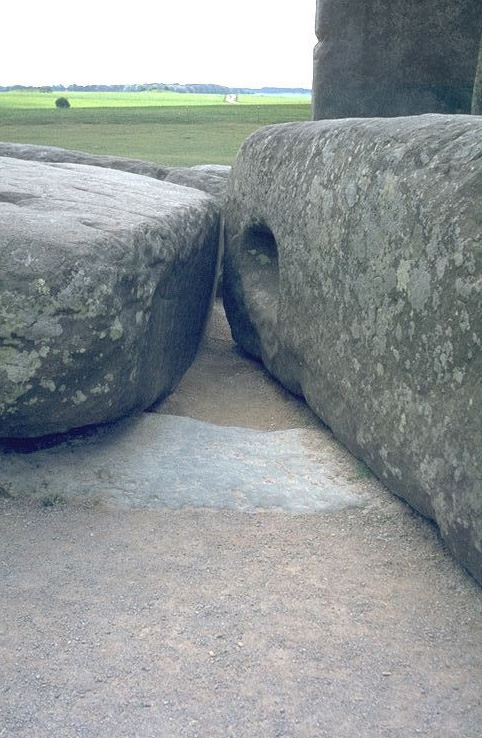
tenon
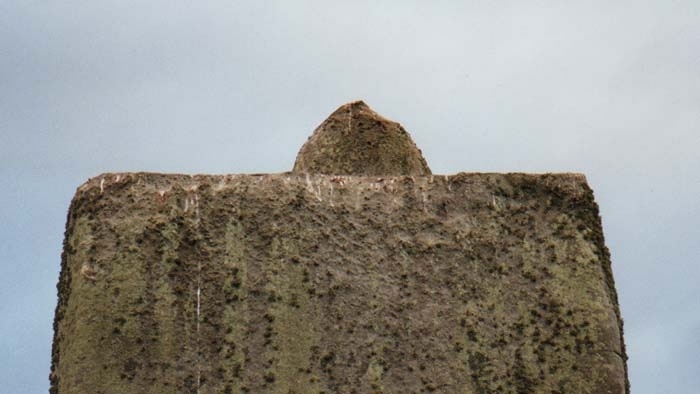
only exist in wales (125 miles away)
unknown how they were moved
bluestones
lentils were carved on an outward incline so they appear straight from the ground
slight convexity to posts to compensate for the concavity the viewer experiences if they were straight (entasis)
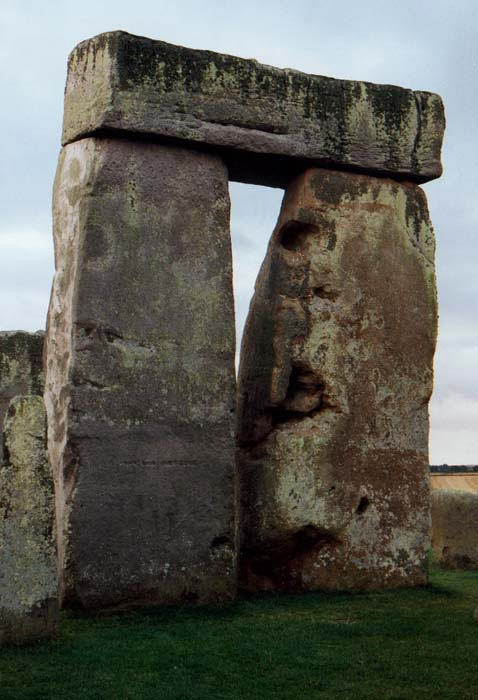
a fallen sarsen with distinctive ridges from the shaping process
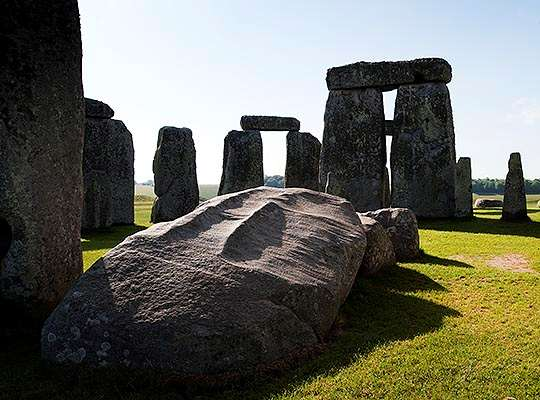
burial site
astronomical function
land of the dead
function of stonehenge
oriented to capture the sun’s rising over the heel stone and altar stone during the summer solstice
astronomical function of stonehenge
nearly all buried there were adult males aged 24-40, in good health, and with little sign of hard labor or disease
implies stonehenge was a mark of elite status and these remains may be some of the first political leaders of great britain
burial site function of stonehenge
durrington walls
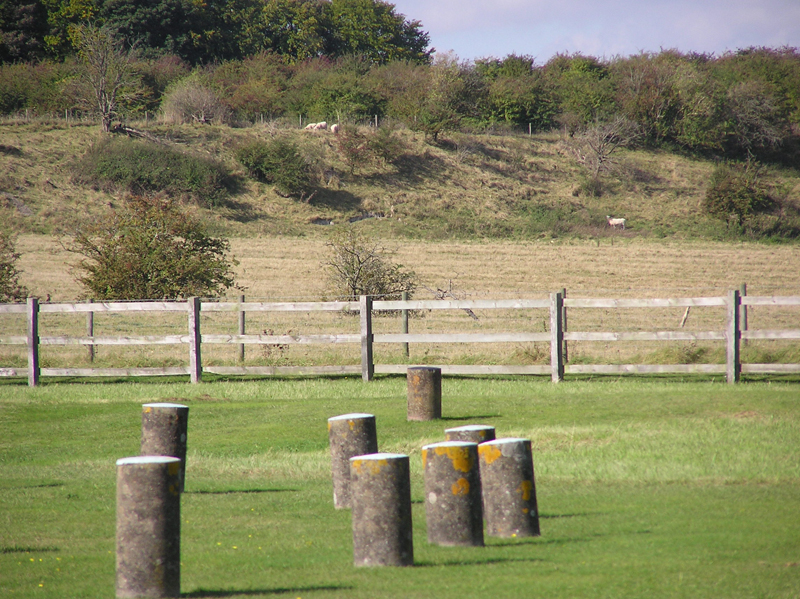
aligned to the winter solstice sunrise, summer solstice sunset
land of the living
durrington walls
adena/mississippian
1,300 ft 20 ft wide 3-5 ft high
effigy mound
serpent were associated with earth and fertility crop
aligned with the summer solstice sunset and winter solstice sunrise
head - east
tail - west
7 coils in between
serpent mound
cermonial mound built in the shape of animals by native north american people
effigy mound
serpent mound
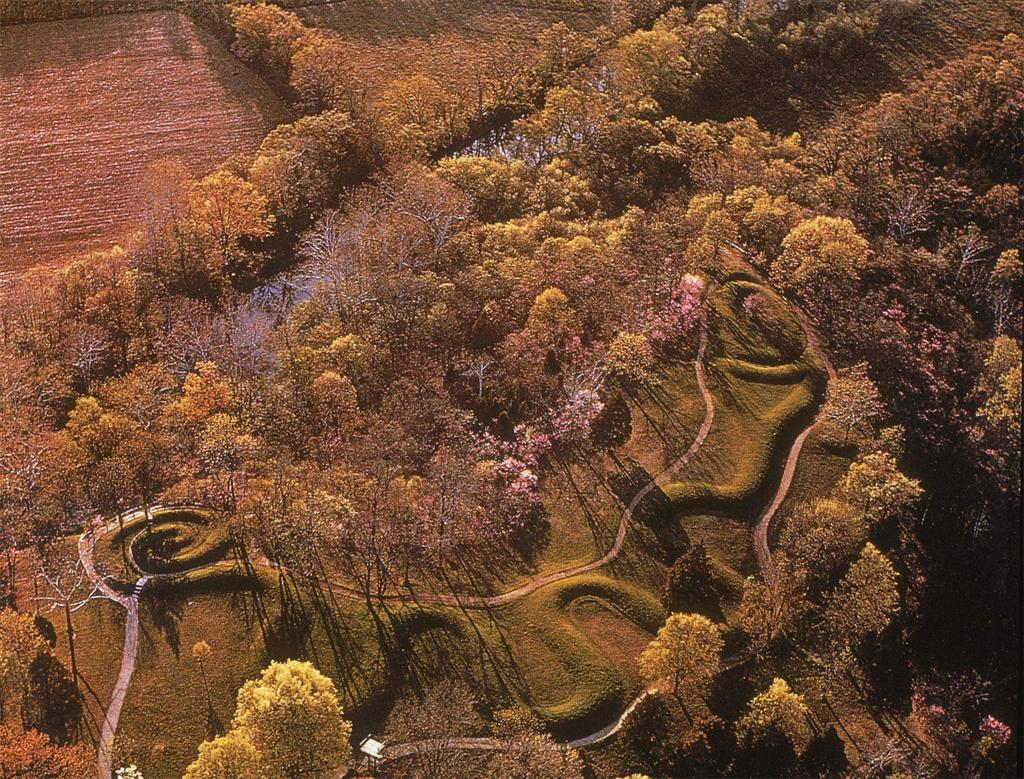
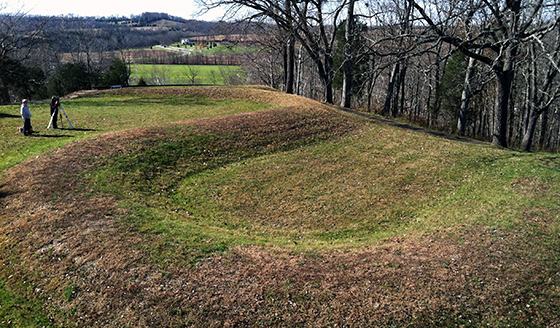
objects found in graves near serpent mound
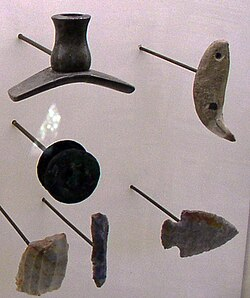
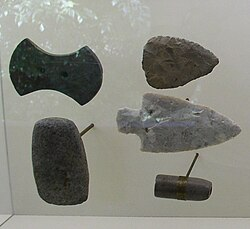
euphrates
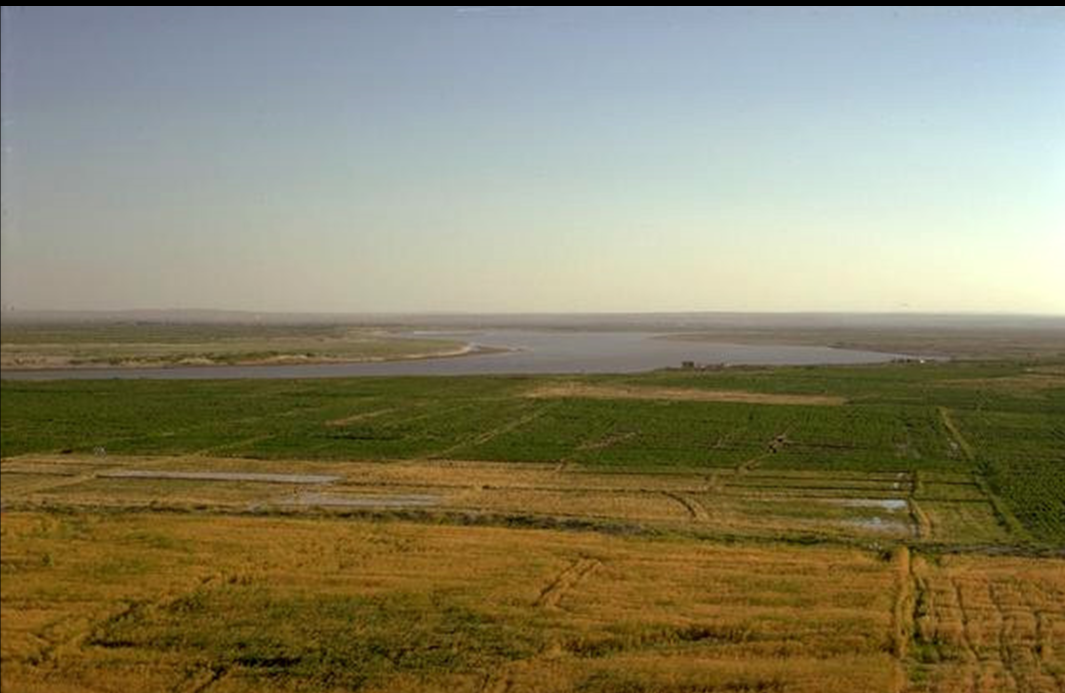
invented writing in 3100
invented irrigation and methods of flood control
bronze
composed epic of gilgamesh
consisted of independent city-sates: uruk and ur
fertile land
sumer
each city state dedicated to a deity to whom a temple was built
gov and religion not separated
the large-scale irrigation systems and labor required for extensive farming was managed by a centralized authority
sumer political/religious composition
The early development of this centralized authority, over large numbers of people in an urban center, is really what distinguishes Mesopotamia and gives it a special position in the history of Western culture.
Here, for the first time, thanks to ample food and a strong administrative class, it develops a very high level of craft specialization and artistic production.
why is mesopotamia called the cradle of civilization
the earliest writing we know of dates to 3000 bc and was likely invented by the sumerians. earliest tablets represented the work of administrators, large temple institutions, recording the allocation of rations or movement of goods.
used to keep records of grain, sheep, and cattle entering or leaving stores and farms. also used to write stories, myths, and personal letters
writing with a reed stylus on a clay tablet to make wedge shaped marks
cuneiform
remains of anu ziggurat uruk
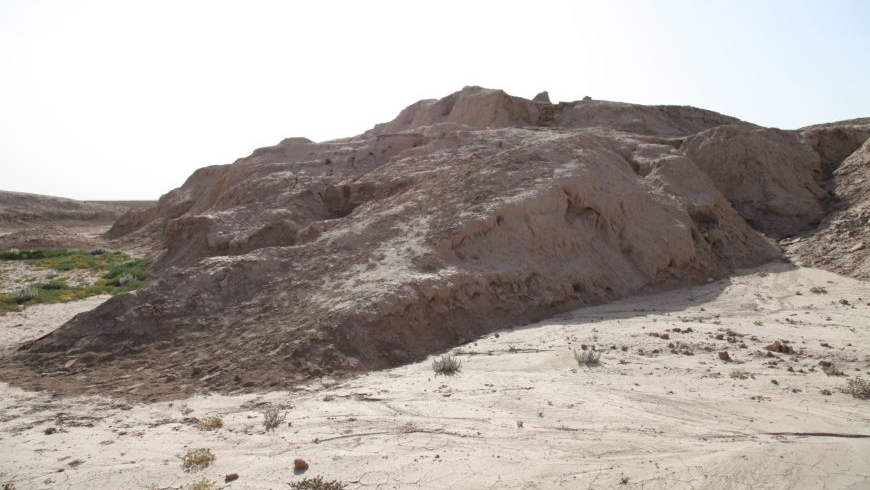
reconstruction drawing anu ziggurat and white temple uruk

raised the temple closer to the heavens where the god’s lived
protected the temple from flooding
demonstrated dominance in the life of the city
limited access to priestly classes only
what was the function of ziggurat
white temple
dating to the late 4th millennium
dedicated to the sky god anu
three entrances, none facing the ziggurat ramp so people would have to walk around it
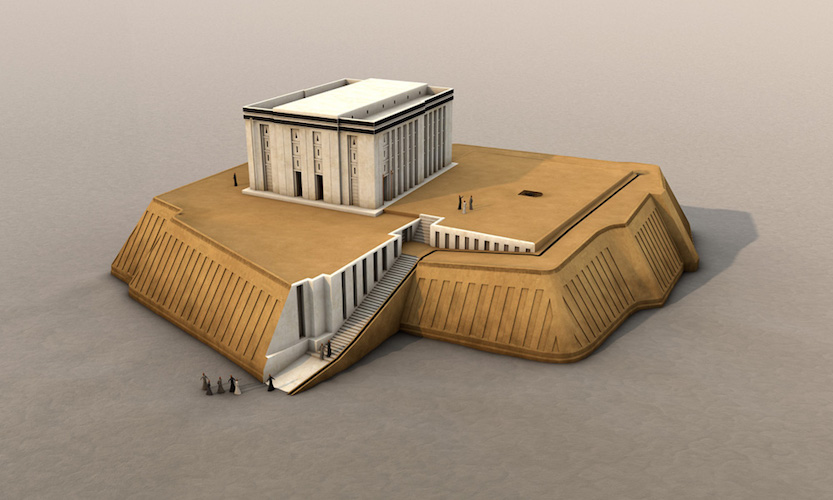
votive statues from square temple, eshnunna
tample likely dedicated to the god abu
range in size from 9-28 inches
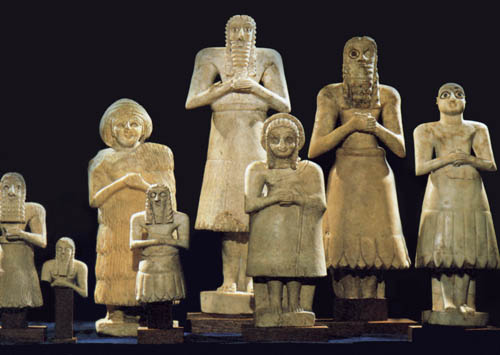
from latin meaning vow
something dedicated to a deity
commissioned by individuals
variation in size represents wealth and social status
votive
mortals who stand in perpetual worship of the god of the temple - some statues were inscribed on the back or bottom with a personal name and prayer
adorants
carved vase uruk
found in temple dedicated inanna
made of alabaster
the warka vase
temple of inanna
upper register - marriage between inanna and husband
three ft high over 600 pounds
depicts religious festival to honor
4 registers
stolen in 2003 and was returned several months later
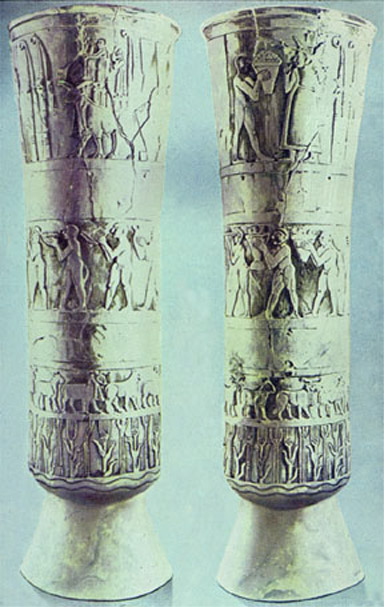
goddess of fertility, love, and war
inanna
afterlife described on literary clay tables
only king and nobles buried in cemeteries
common people buried in family tomb in their homes
grave goods ensured a comfortable afterlife
common for royalty to be buried with servants horses etc
sumarian grave goods
death pit
open square pit serving as a graveyard for the bodies of armed men and women and young girls
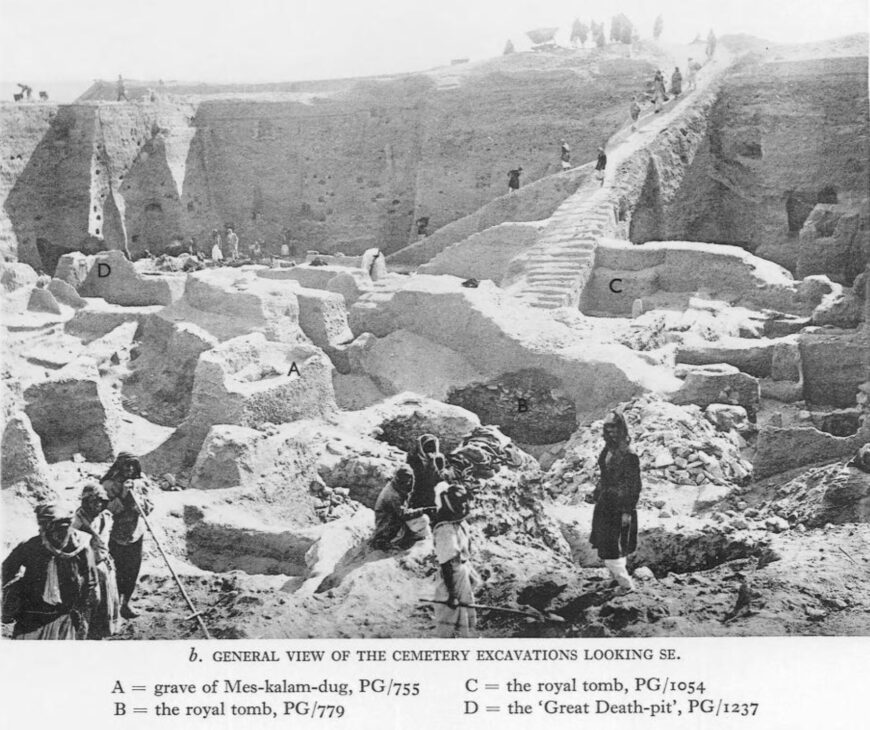
gold bull amulet
crafted of gold over a bitumen core and was found loose in soil near a tomb
the beard indicates divinity
treasure of ur
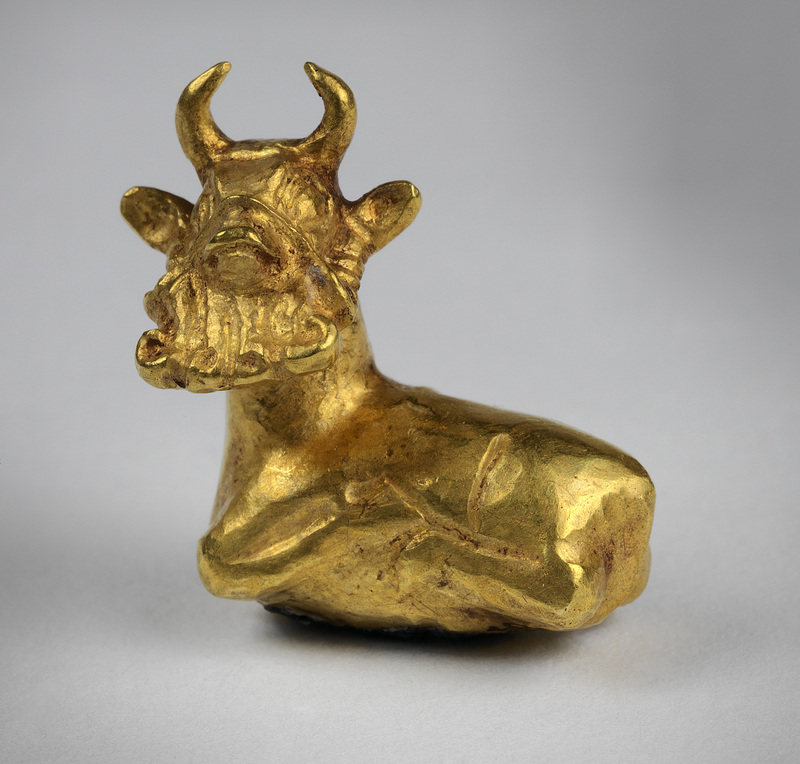
tumbler
made of gold and silver alloy called electrum
grave good
treasure of ur
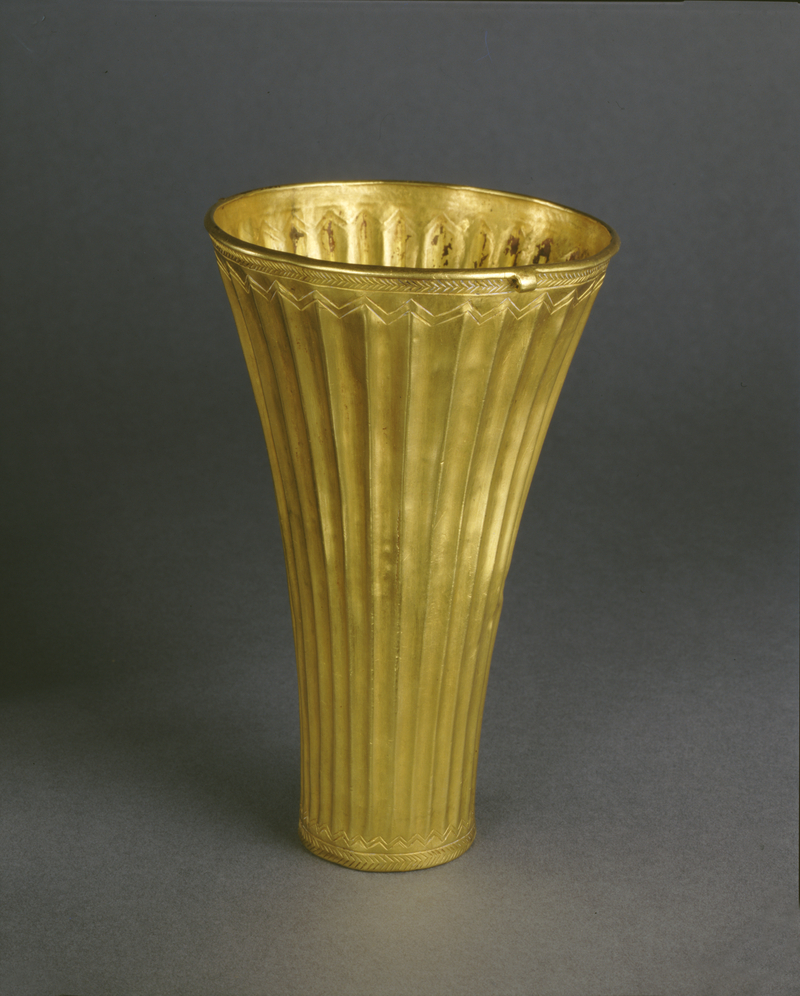
queen’s lyre
lapis lazuli shell and red limestone mosaic decoration set in bitumen
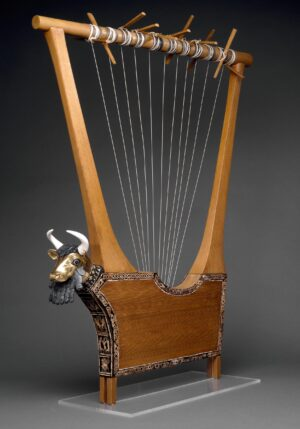
ram in thicket
sumerian found in a tomb
gold, silver, lapis, shell, bitumen, copper alloy, and red limestone
the ram is described as a goat and it reaches up in a pose often adopted by goats
head + legs = gold leaf
ears = copper
horns and fleece = lapis
body = shell
genitals = gold
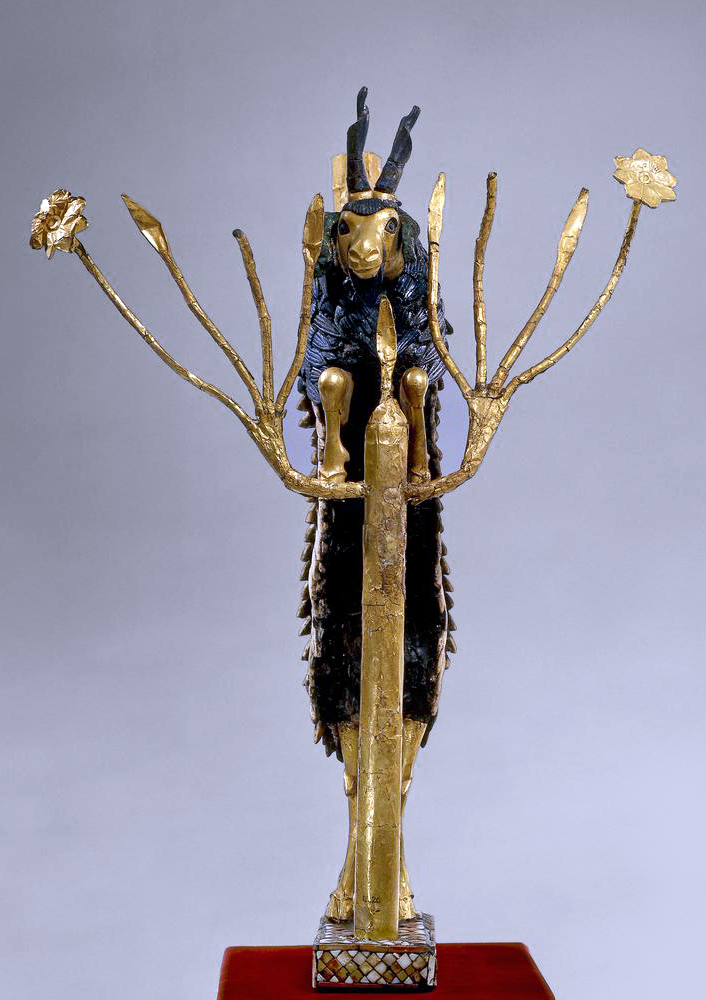
the standard of ur
shell, limestone, lapis, bitumen
mosaic scenes
made up of 2 long flat planels of wood and two short sides and is covered in bitumen
thought to be military standard
violence and grandeur of sumerian kingship
one side shows a war scene - donkeys, stripped soldiers (prisoners), king figure centralized
one shows men bringing animals as tribute or treasure - victory and celebration, man playing lyre
historical narrative
hierarchy - wealthiest most powerful figures at the top and common laborers at the bottom
3 horizontal bands read from left to right
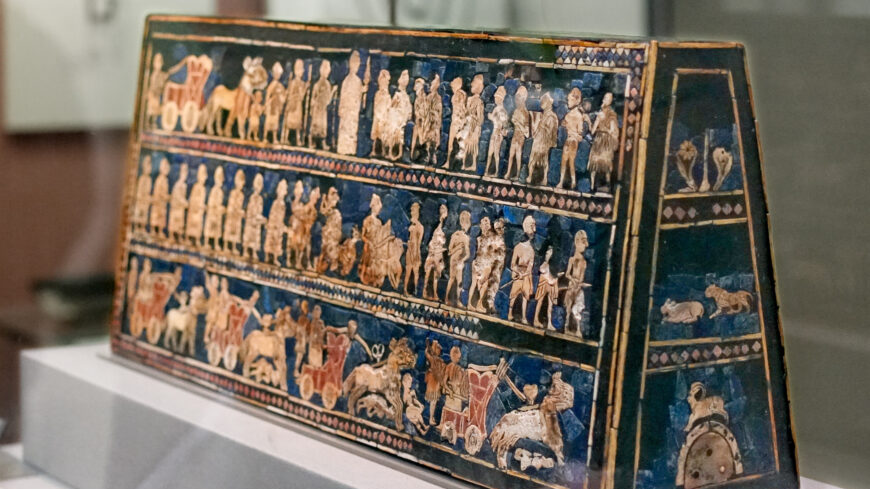
a small pierced object like a long round carved in reverse and hung on stringers of fiber or leather
unique record of individuals from this era
each seal was owned by one person and used by them as a signature
some seals were valued for their beauty or the magic they were thought to possess
cylinder seal
cylinder seal
calcite
owned by a woman named sasa akkadian
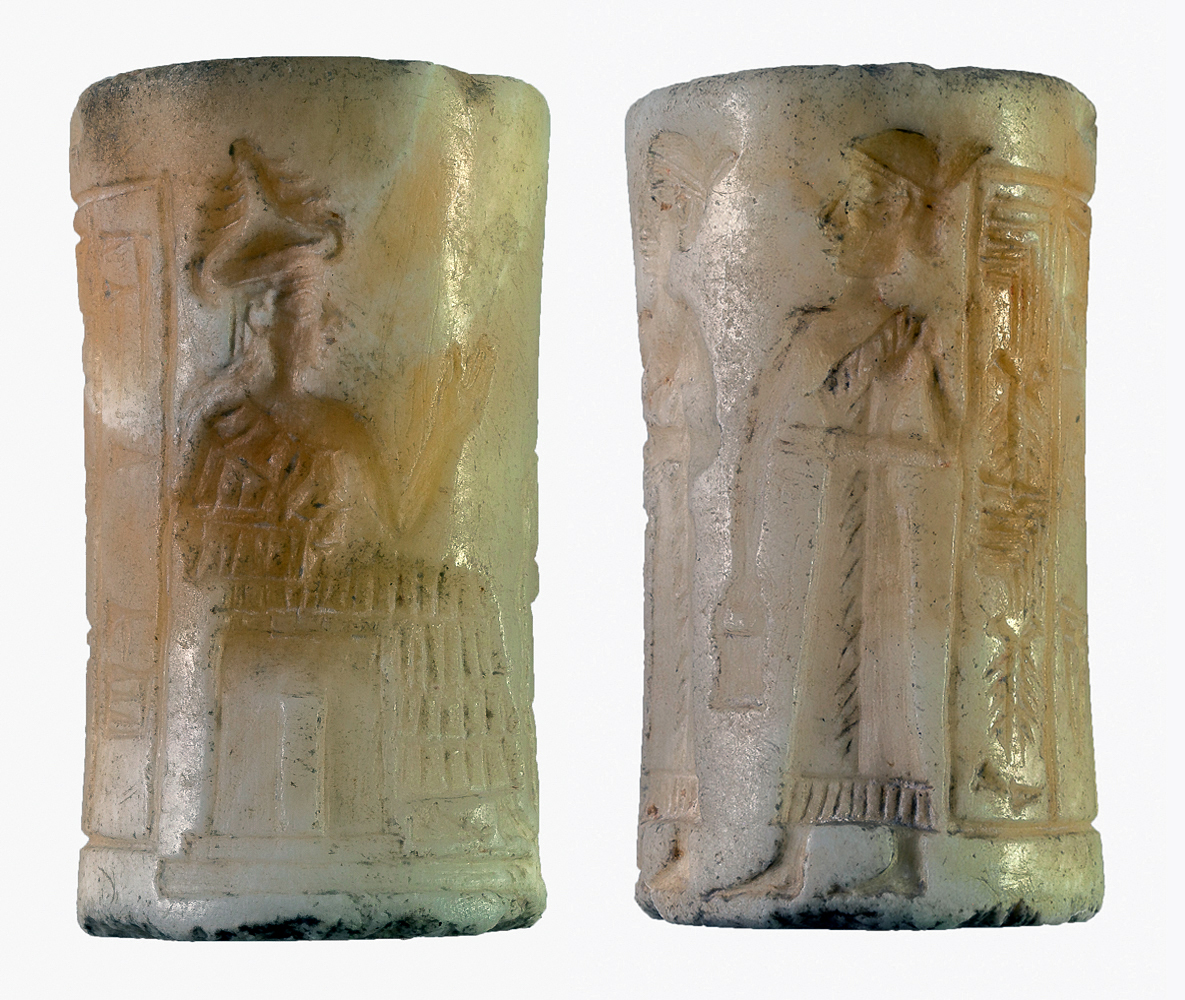
the iconography. each character, gesture, and decorative element, can be read and reflected back on the owner which reveals their social rank and sometimes the name of the owner.
the images carved on the seals also reflect the pervading artistic styles of the day and the particular region of their use
why are art historians interested in cylinder
stele of hammurabi
theocrat
shamash - babylonian sun god also justice and equality and judge of gods and men
hammurabi - theocrat and the laws come from the gods
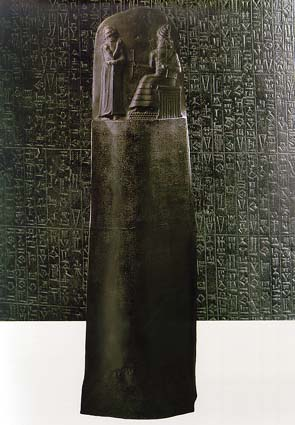
vertical stone monument or marker often inscribed with text or with relief carving
stele
dominated mesopotamia
entirely military
after opponents were conqured they were tortured
assyrian
lamassu
winged human-headed bull
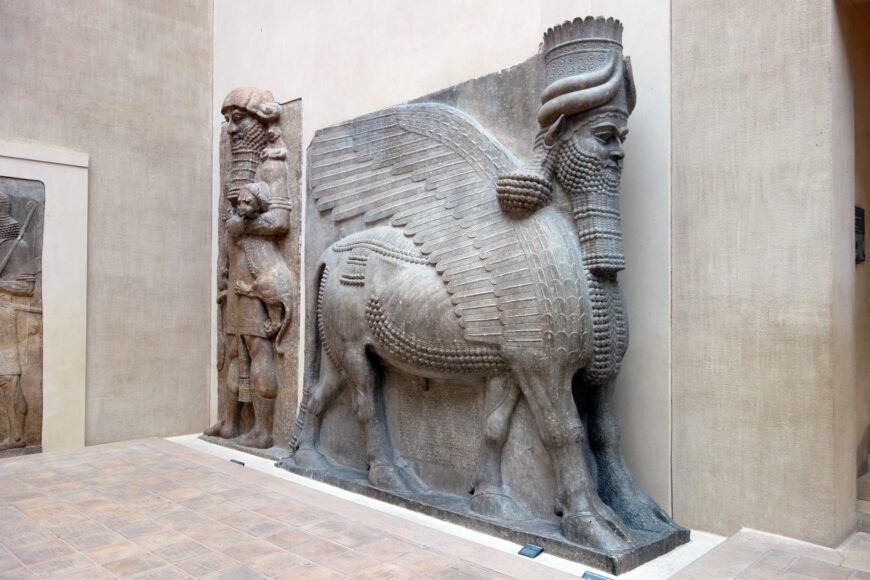
inscription in cuneiform on lamassu
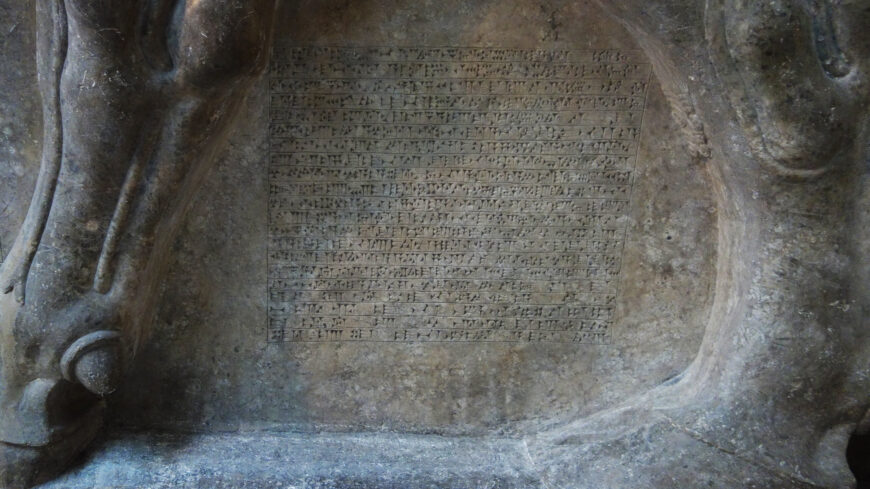
bull-headed lyre
royal cemetery ur tomb
